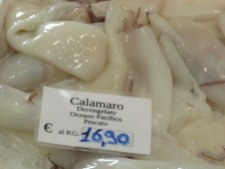30 April 2019.
It is always time for wine in France’s Alsace Region, but only for a short time in the spring do the storks roost here to rear their young. Until we arrived we had no idea about this annual migration nor did we know how revered the storks, or cigognes blanches, are. They are symbols of happiness and faithfulness bringing fertility and good luck. There is a fun read here from the Seattle Times a few years ago.

Ric captured a close up of this nest with both parents present. They were clicking away at each other, their method of communicating. The nest is perched atop a steeple. Note the supports. The towns build and maintain platforms to support the huge nests.
We have had a full itinerary, one day taking a tour of a small portion of the Route des Vins d’Alsace visiting three family-run wineries, and another day exploring the beautiful and tiny villages, spotting storks, and enjoying the seasonal decorations that adorn every house, shop, and square. Wisteria drapes from walls, roofs, and trees, enhanced by bunnies, eggs, and other signs of the just-past Easter holiday. The air is fragrant with lilac.
A day hike through the vineyards got us away from the hordes and tourist buses in Colmar, which has been our base for five nights. There has also been plenty of time to enjoy the local cuisine.

Flammekueche or tarte flambée, depending on your language choice. Think of it as Alsatian pizza. It is FABULOUS.
As usual, we are car-free. I can imagine why a car would be helpful in this region as public transportation is a bit thin. With the help of a taxi driver named Isa, we have managed quite well. Three times Isa took us to villages that were difficult to reach by bus. We feel like we have our own personal driver in Colmar. Three taxis were far more economical than renting a car for 4-5 days.
For now, I will let our pictures do the talking. Between us, we took far too many in four days: almost 500! Watch for a post (soon!) over at Project Easy Hiker as well about our backroads walk from Riqewihr to Ribeauville along with our visit at the Centre de Reintroduction which has helped in stork recovery.

One of the more brightly colored buildings, this one in tiny Riquewihr. Can you see the bunnies in the window boxes?

The decorations would be tacky on one house, kitschy on two, but when every building has them, it is a theme.

Even this restaurant in Turckheim was bedecked. This is where we had the tarte flambée along with seasonal white asparagus, another specialty of the region.

In Alsace, they use some very old wine barrels such as these beautifully decorated ones from a bygone era.

Even in the overast that predominated our days in Colmar, the buildings are charming. No wonder this area is called “La Petit Venise.”














































































